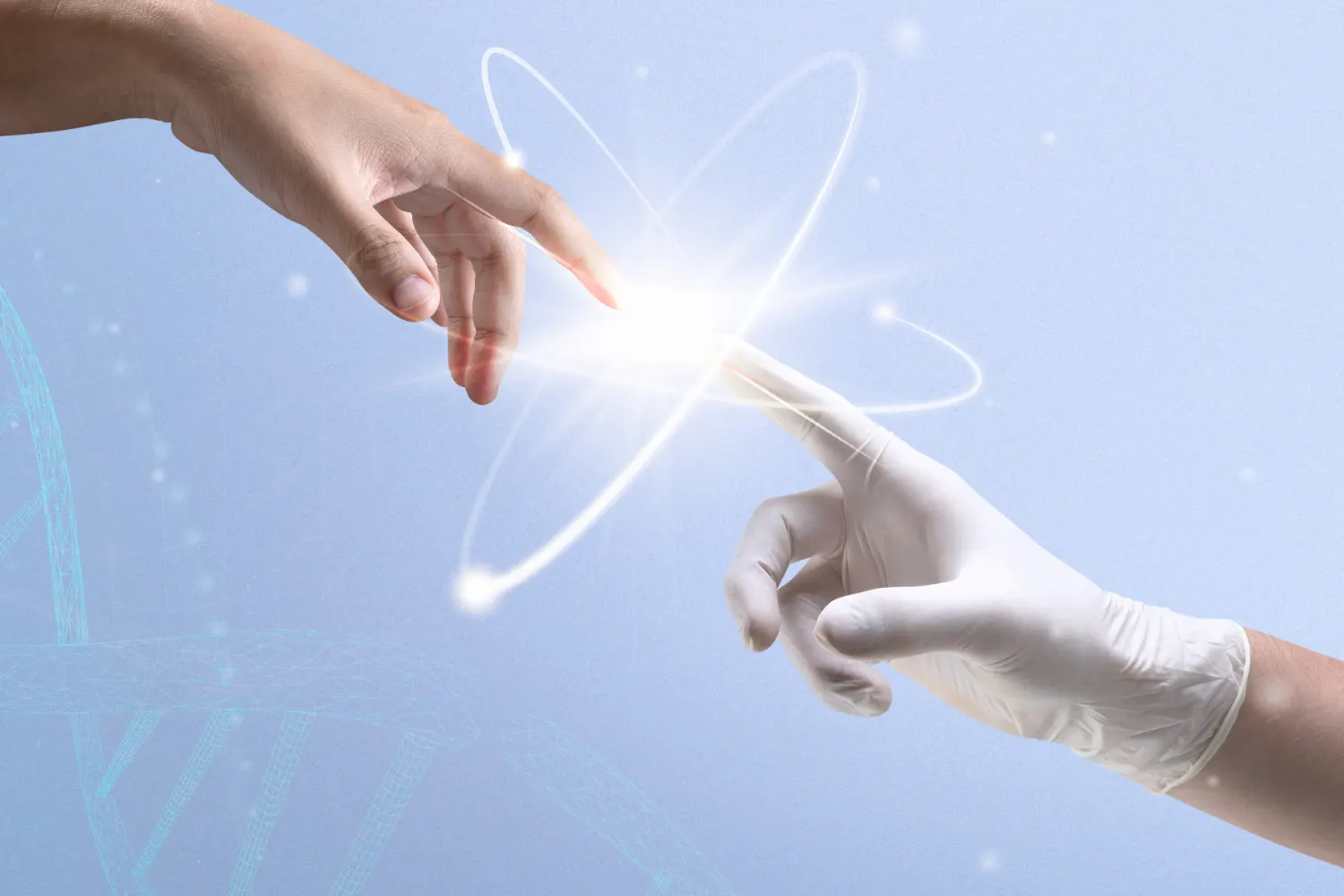Growth hormone deficiency (GHD) is a complex endocrine disorder in which the pituitary gland fails to produce adequate levels of growth hormone (GH). This deficiency can affect individuals at any stage of life, leading to significant health complications, including impaired growth in children and metabolic issues in adults. The condition can be congenital, meaning present from birth, or acquired later in life due to injuries, tumors, or medical treatments affecting the hypothalamic-pituitary axis.
With recent advancements in diagnostics and treatments, early identification and proper management of GHD have become increasingly effective, improving long-term patient outcomes. This article provides a comprehensive guide to recognizing the signs of GHD, understanding the diagnostic process, and exploring modern treatment options. Whether you are a patient, caregiver, or medical professional, this resource will offer valuable insights into managing and treating GHD effectively.
In This Article
Signs and Symptoms of Growth Hormone Deficiency
Growth hormone plays a critical role in numerous bodily functions, including growth, metabolism, and tissue repair. The symptoms of GHD vary depending on age, severity, and underlying causes.
Signs of GHD in Children
Children with GHD may exhibit distinct physical and developmental characteristics that differentiate them from their peers. These symptoms often become evident within the first few years of life:
- Slow or stunted growth: The most prominent indicator of GHD in children is significantly slower-than-average growth. While normal growth rates vary, a child with GHD typically grows less than 5 cm (2 inches) per year after infancy.
- Delayed puberty: Many children with GHD experience a delay in the onset of puberty. This can include a lack of secondary sexual characteristics such as breast development in girls or deepening of the voice in boys.
- Increased body fat, particularly around the abdomen: Children with GHD often develop a chubby appearance due to altered fat metabolism, even if their diet remains normal.
- Weak muscle tone and reduced strength: Since GH plays a role in muscle growth and maintenance, children with GHD may have weaker muscles and lower physical endurance.
- Shorter limbs in proportion to the body: While proportional growth retardation is common, some cases show a disproportionate short stature, which can be a distinguishing feature of severe GHD.
- Hypoglycemia (low blood sugar) in infancy: Some infants with GHD may experience recurrent episodes of low blood sugar due to GH’s role in glucose regulation.
Signs of GHD in Adults
In contrast to children, GHD in adults primarily affects metabolism, energy levels, and overall health rather than physical growth:
- Fatigue and reduced energy levels: Adults with GHD often experience chronic fatigue, which can interfere with daily activities and overall quality of life.
- Increased body fat and difficulty maintaining muscle mass: GH plays a vital role in regulating body composition. A deficiency often results in increased fat accumulation, particularly around the abdomen, and reduced muscle strength.
- Decreased bone density and higher risk of fractures: GH stimulates bone growth and mineralization. Adults with GHD are at a higher risk for osteoporosis and fractures, particularly in the spine and hips.
- Impaired psychological well-being: Many adults with GHD report symptoms of depression, anxiety, and mood instability, which may be linked to GH’s role in brain function and neurotransmitter balance.
- Reduced exercise capacity and endurance: Individuals with GHD often struggle with physical endurance due to decreased muscle strength and oxygen utilization efficiency.
- Thin, dry skin and premature aging: Since GH contributes to collagen production, a deficiency can lead to thinning skin, reduced elasticity, and early signs of aging.
Recognizing these symptoms is critical for seeking appropriate medical evaluation and treatment.
Diagnosing Growth Hormone Deficiency
Diagnosing GHD is a multi-step process that involves a combination of clinical evaluation, biochemical tests, and imaging studies. Since GH is secreted in pulses rather than at a constant rate, random GH level measurements are often unreliable.
Medical History and Physical Examination
The diagnostic process begins with a thorough review of the patient’s medical history, including growth patterns, developmental milestones, and any underlying health conditions. A physical examination is performed to assess growth parameters, body proportions, and signs of GH-related deficiencies.
Hormone Testing
Laboratory tests play a crucial role in confirming GHD. The most common diagnostic approaches include:
- Growth Hormone Stimulation Tests: Since GH is not consistently present in the bloodstream, stimulation tests are used to provoke GH release artificially. Medications such as insulin, glucagon, or arginine are administered, and GH levels are measured over time. A low response confirms GHD.
- Insulin-Like Growth Factor-1 (IGF-1) Testing: IGF-1 is produced in response to GH and has a more stable blood concentration, making it a useful indirect marker of GH activity.
- Insulin-Like Growth Factor Binding Protein-3 (IGFBP-3) Testing: Similar to IGF-1, IGFBP-3 levels are influenced by GH and provide additional diagnostic insight.
Imaging Studies
To identify structural abnormalities in the pituitary gland, imaging techniques such as magnetic resonance imaging (MRI) are performed. MRI scans help detect tumors, structural defects, or injuries affecting GH production.
Genetic Testing
In cases where GHD is suspected to be congenital or hereditary, genetic testing can identify mutations in genes associated with pituitary function.
Summary of Diagnostic Tests
| Test Type | Purpose | Common Findings in GHD |
|---|---|---|
| GH Stimulation Test | Measures GH response to stimulation | Low or absent GH secretion |
| IGF-1 Test | Assesses long-term GH activity | Low IGF-1 levels |
| MRI Scan | Identifies pituitary abnormalities | Presence of pituitary tumors or structural defects |
| Genetic Testing | Detects genetic mutations linked to GHD | Mutations in GH-related genes |
Accurate diagnosis is essential to determine the most effective treatment approach.
Treatment of Growth Hormone Deficiency
The standard treatment for GHD is recombinant human growth hormone (rhGH) therapy, which involves subcutaneous injections of synthetic GH. Treatment is individualized based on factors such as age, severity, and overall health.
Traditional GH Therapy
For decades, daily GH injections have been the standard approach. Patients or caregivers administer injections at home, rotating injection sites to prevent skin irritation.
- Children’s Treatment: Dosage is adjusted based on growth response, with regular monitoring to ensure optimal outcomes.
- Adults’ Treatment: While GH is primarily used for growth in children, adults with GHD may receive therapy to improve metabolism, muscle mass, and bone health.
New and Emerging Treatment Options
Recent advancements have led to the development of more convenient and effective GH therapies:
- Long-Acting GH Formulations: New weekly GH injections such as somapacitan and lonapegsomatropin reduce the treatment burden by requiring fewer injections.
- Needle-Free GH Delivery Systems: Technologies such as GH auto-injectors and needle-free jet injectors improve ease of use and reduce discomfort.
- Gene Therapy and Regenerative Medicine: Experimental treatments aim to restore natural GH production by repairing pituitary function at the genetic level.
Effectiveness and Monitoring
Patients undergoing GH therapy require ongoing monitoring of IGF-1 levels, bone density scans, and metabolic markers to adjust dosages and ensure safety.
Potential Side Effects
While generally well-tolerated, GH therapy may cause joint pain, fluid retention, increased blood sugar levels, and intracranial hypertension in some individuals. Regular follow-ups help mitigate risks.
Conclusion
Growth hormone deficiency is a serious medical condition that impacts growth, metabolism, and overall health. Early detection and treatment are crucial for improving patient outcomes. Advances in diagnostic techniques and treatment options, including long-acting GH formulations and regenerative therapies, continue to transform care for individuals with GHD.
By recognizing the signs of GHD, undergoing appropriate testing, and following an effective treatment plan, individuals with GHD can lead healthier, more fulfilling lives. Ongoing research and medical innovations offer hope for even more effective treatments in the future.
References
- Molitch, M. E. (2019). Diagnosis and Treatment of Growth Hormone Deficiency in Adults. The Journal of Clinical Endocrinology & Metabolism, 104(5), 1403-1411.
- Shalet, S. M. (2021). Advances in Growth Hormone Therapy. Endocrine Reviews, 42(3), 275-299.
- Cohen, P. et al. (2023). Long-Acting Growth Hormones: Benefits and Risks. Journal of Pediatric Endocrinology, 36(4), 678-689.
- National Institutes of Health. (2024). Growth Hormone Deficiency Overview. Retrieved from https://www.nih.gov










0 Comments